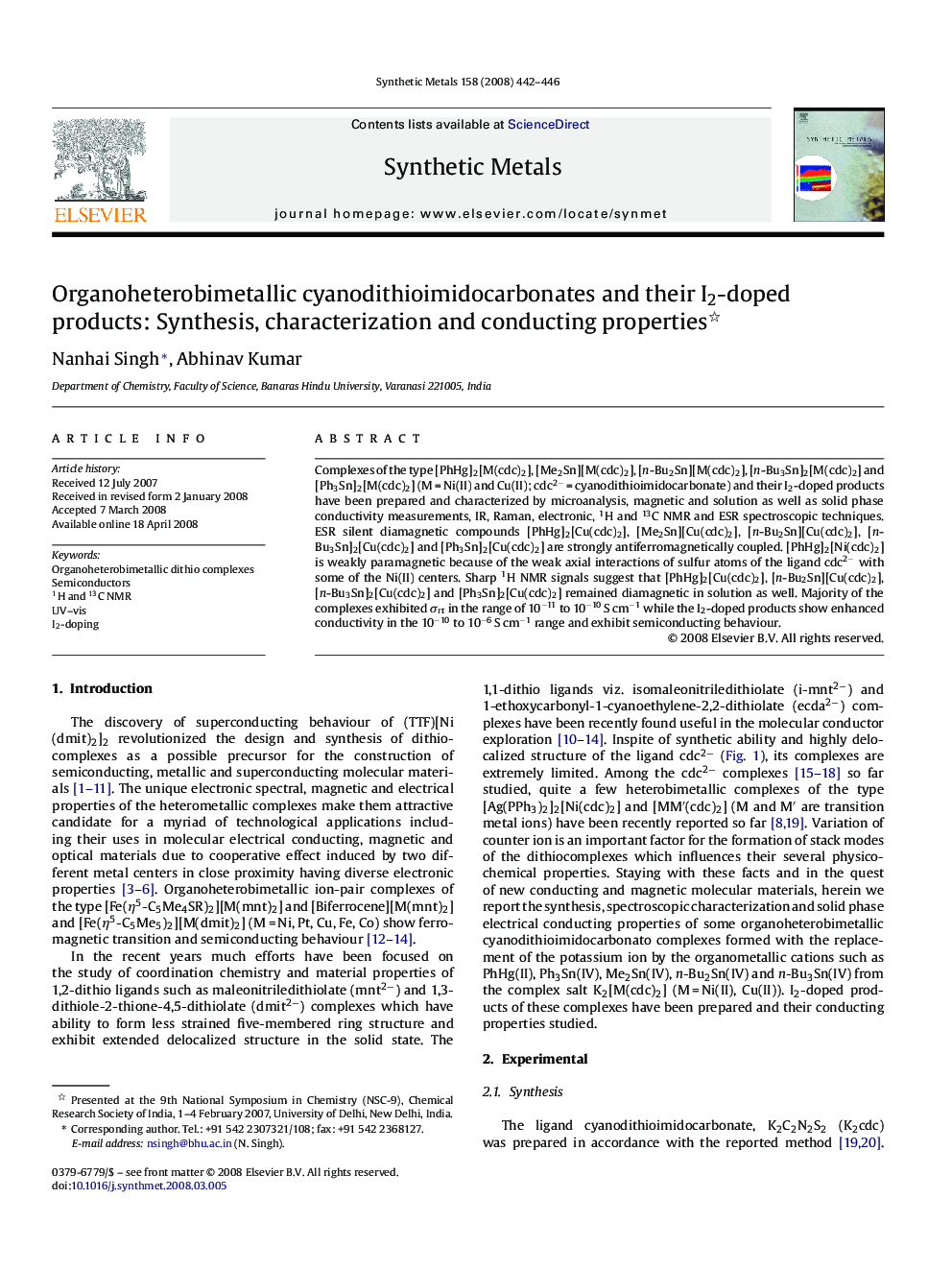| Article ID | Journal | Published Year | Pages | File Type |
|---|---|---|---|---|
| 1443248 | Synthetic Metals | 2008 | 5 Pages |
Abstract
Complexes of the type [PhHg]2[M(cdc)2], [Me2Sn][M(cdc)2], [n-Bu2Sn][M(cdc)2], [n-Bu3Sn]2[M(cdc)2] and [Ph3Sn]2[M(cdc)2] (M = Ni(II) and Cu(II); cdc2â = cyanodithioimidocarbonate) and their I2-doped products have been prepared and characterized by microanalysis, magnetic and solution as well as solid phase conductivity measurements, IR, Raman, electronic, 1H and 13C NMR and ESR spectroscopic techniques. ESR silent diamagnetic compounds [PhHg]2[Cu(cdc)2], [Me2Sn][Cu(cdc)2], [n-Bu2Sn][Cu(cdc)2], [n-Bu3Sn]2[Cu(cdc)2] and [Ph3Sn]2[Cu(cdc)2] are strongly antiferromagnetically coupled. [PhHg]2[Ni(cdc)2] is weakly paramagnetic because of the weak axial interactions of sulfur atoms of the ligand cdc2â with some of the Ni(II) centers. Sharp 1H NMR signals suggest that [PhHg]2[Cu(cdc)2], [n-Bu2Sn][Cu(cdc)2], [n-Bu3Sn]2[Cu(cdc)2] and [Ph3Sn]2[Cu(cdc)2] remained diamagnetic in solution as well. Majority of the complexes exhibited Ïrt in the range of 10â11 to 10â10 S cmâ1 while the I2-doped products show enhanced conductivity in the 10â10 to 10â6 S cmâ1 range and exhibit semiconducting behaviour.
Keywords
Related Topics
Physical Sciences and Engineering
Materials Science
Biomaterials
Authors
Nanhai Singh, Abhinav Kumar,
